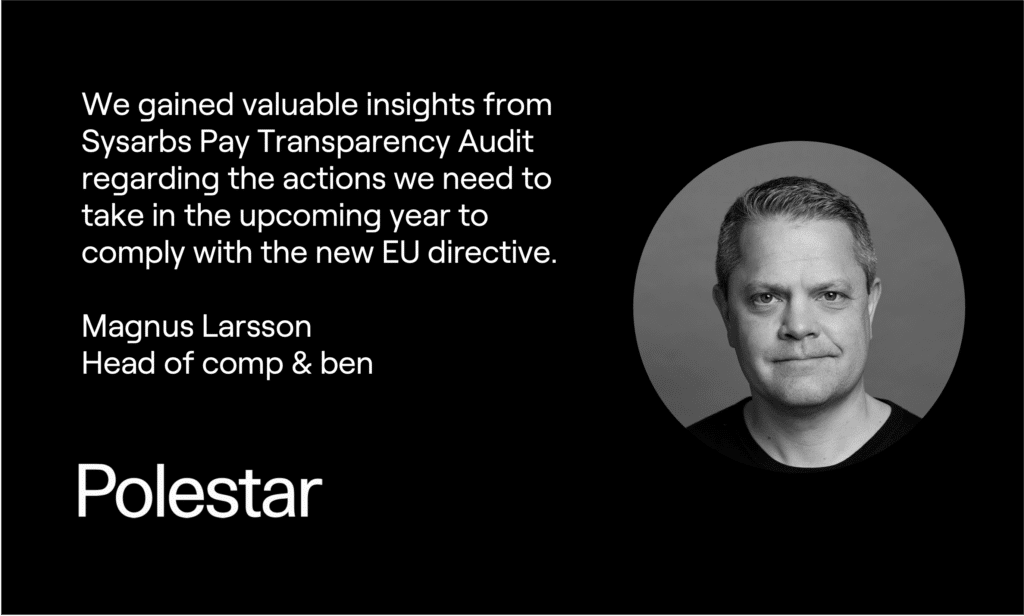On March 30, 2023, an overwhelming majority in the parliament approved the new "EU Directive on Pay Transparency." The purpose of the directive is to address the unjustified gender pay gap in Europe through concrete measures. In this blog post, we summarize the most common questions related to the EU directive.

The purpose of the salary transparency directive is to give employees the opportunity to assert their right to equal pay for equal or equivalent work between women and men through a set of binding measures for transparency in wage setting. The goal is to address remaining deficiencies in the enforcement of the fundamental right to equal pay and ensure that this right is respected throughout the EU.
Salary transparency is something that many in Sweden are unfamiliar with, which is why Sweden was one of the few countries that opposed the directive and also voted against it. Employers in Sweden have not previously been required to be transparent about salary levels, which means that the implementation of the directive in Sweden is likely to be more extensive than in other countries. The gender pay gap in Sweden was 11.2% in 2020, according to Eurostat. The wage gap was thus slightly lower than the EU average of 13%.
Regarding the administrative aspect of the EU directive on salary transparency, HR departments will face relatively many and tough requirements, and expertise in HR-legal and compensation & benefits will become highly sought after. Organizations will need to review their entire salary process and update it according to the directive, as well as train all managers in the new processes that encompass both wage setting and recruitment.
Increased transparency in wage setting before employment: During recruitment, employers should provide information about the starting salary or salary range for the position being filled, preferably in the job advertisement. Employers are prohibited from asking about the applicant's salary history.
Transparency in wage and career development: Employers with more than 100 employees should ensure that employees have easy access to the criteria used to determine salary levels and career development.
Right to information: Employees have the right to access information about their own salary level and the average salary levels for categories of employees performing the same or equivalent work.
Reporting on wage differences: Companies with more than 100 employees should provide information on wage differences between female and male employees. This information should be publicly available on the company's website or in an easily accessible manner, and shared with national authorities and employee organizations.
Joint wage assessment: If the wage differences between women and men in a specific job profile are more than 5%, the employer, together with employee representatives, should conduct a joint salary survey to investigate if the wage differences can be explained by gender-neutral arguments. If unjustified wage differences are identified, measures should be taken to correct the gender pay gap.
Legal review: If an employee believes they have been subjected to discrimination based on gender, the employer must prove that there has been no violation of the principle of equal pay. During the review, the affected employee may be entitled to full compensation retroactively, including legal costs. The court may also order the employer to fulfill its obligations and impose fines for non-compliance. Member states should have specific sanctions for violations of the principle of equal pay, including fines.
The new rules entail requirements for a structured wage process that includes, among other things, a structured job architecture with career paths, assessment criteria, salary ranges, and a clear and structured process for analyzing and addressing unjustified wage disparities.
Transparency will also be required through public disclosure of wage data, openness for employees and job applicants regarding the results of salary surveys, as well as transparency in salary levels during the recruitment process.
The lack of salary transparency has been identified as one of the key barriers to reducing unjustified wage disparities between women and men, which averaged around 13% in the EU in 2020. Wage disparities have long-term consequences for women's quality of life, their risk of falling into poverty, and the persistent pension gap, which stands at approximately 30% in the EU (data from 2018).
Access to information: The new rules make it mandatory for employers to inform job applicants about the starting salary or salary range for advertised positions, either in the job advertisement or prior to the interview. Employers will also be prevented from asking candidates about their salary history. Once an employee is hired, they have the right to request information from the employer about the average salary level, disaggregated by gender, for categories of employees performing the same or equivalent work. They also have the right to receive information about the criteria used to determine wages and career development, which must be objective and gender-neutral.
Reporting obligations: Companies with more than 250 employees will be required to annually report on the gender wage disparities within their organization to relevant authorities. For smaller organizations, reporting will occur every three years. Organizations with fewer than 100 employees will not have any reporting obligations. If the report shows a wage disparity of more than 5% that cannot be justified by objective, gender-neutral criteria, the companies will be obligated to take action in the form of a joint assessment conducted in collaboration with employee representatives.
Access to justice: Under the new directive, employees who have experienced wage discrimination based on gender can receive compensation, including full reimbursement of lost wages and related bonuses or benefits. While the burden of proof traditionally rested on the employee, it is now the employer's responsibility to prove that there has been no violation of the principle of equal pay for equal work.
For employers, the new rules on salary transparency entail an increased obligation to be transparent and fair in their wage-setting processes. They need to have clear criteria and justify any wage differences among employees. They will also be required to report on any wage disparities and take measures to reduce unjustified differences. This may require employers to review their existing salary policies and structures and implement more structured and transparent processes.
In the job market, increased salary transparency can benefit job seekers by providing them with better insight into salary ranges and the opportunity to assess their own salary expectations. It can also contribute to promoting gender equality and reducing the gender pay gap, thereby creating a more fair and equal job market.
In summary, the new EU rules on salary transparency aim to promote equality by granting employees rights to access salary information, demand fair wages, and reduce the wage gap between women and men. Through increased transparency and reporting obligations for employers, these rules are expected to contribute to promoting equality and reducing discrimination in the workplace.

Our audit on the EU Pay Transparency Directive incorporates a 3-hour workshop led by a panel of Sysarb experts. They will evaluate your situation to outline the potential impacts of the EU pay transparency directive on your operations.
If you're unsure about where to begin, this presents an ideal opportunity to initiate your path toward adherence.
Throughout the workshop, our pay equity advisors will lead you in understanding the intricacies of the directive. Collaboratively, we will identify potential hazards, obstacles, and establish a strategic roadmap for the upcoming 12-24 months, which you can implement within your organization.

.webp)